#trees in buddhism
Photo
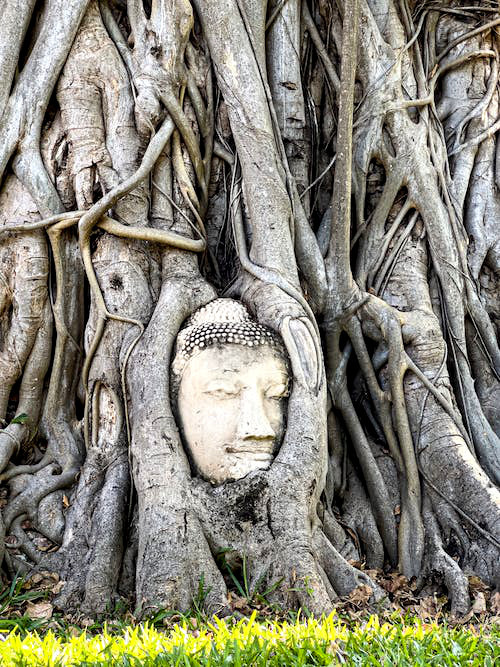
Legends and myths about trees
Trees in Buddhism (4)
Bodhi Tree (Ficus religiosa) – the "tree of awakening"
The Bodhi Tree ("tree of awakening"), also called the Mahabodhi Tree, Bo Tree, is a large sacred fig tree (Ficus religiosa) located in Bodh Gaya, Bihar, India. Siddhartha Gautama, the spiritual teacher of Buddhism, is said to have attained enlightenment under this tree around 500 BCE.
The original tree under which Siddhartha Gautama sat is no longer living, but the term "bodhi tree" is also applied to existing sacred fig trees.
It had been located in Bodh Gaya in present-day Bihar, India, but the tree was cut down due to the suppression of Buddhism in the India around the 5th CE. The decline of Buddhism in the Indian subcontinent coincides with the rise of Islam in that part of the world, especially the Islamic invasions that occurred in the late 12th CE.
However, as the lime tree grows strongly from cuttings, descendants growing from branches of the same tree were transplanted in various places. In recent years, a third generation Gautama Buddha Bodhi tree, grown from the original Bodhi tree in Anuradhapura, Sri Lanka, has been planted in the Mahabodhi temple in Bodh Gaya.
This tree, planted around 250 BCE, is a frequent destination for pilgrims, being the most important of the four main Buddhist pilgrimage sites.

木にまつわる伝説・神話
仏教の樹木 (4)
ゴータマ・ブッダの菩提樹 (聖なるイチジクの木) 〜「覚醒の木」
ゴータマ・ブッダの菩提樹は、仏教の開祖であるゴータマ・ブッダがその木の根元に座って悟りを得た菩提樹 (印度菩提樹)とその挿し木による子孫である。
菩提樹は、インドのビハール州ブッダガヤにある大きな聖なるイチジクの木で、「覚醒の木」とも呼ばれている。仏教の精神的な教師であるシッダールタ・ゴータマは、紀元前500年頃にこの木の下で悟りを開いたと言われている。
シッダールタ・ゴータマが座った元の木はもう生きていないが、「菩提樹」という言葉は、既存の神聖なイチジクの木にも適用される。
元の木は、現在のインドのビハール州のブッダガヤにあったが、5世紀頃のインドにおける仏教の弾圧により木は切られた。インド亜大陸における仏教の衰退は、同地域におけるイスラム教の台頭、特に12世紀後半に起こったイスラム侵攻と重なる。しかし、菩提樹は挿し木により強く育つので各地に同じ木の枝から育った子孫が移植された。近年になって、スリランカのアヌラーダプラにあった初代の菩提樹から育てられた、三代目のゴータマ・ブッダの菩提樹が、ブッダガヤの大菩提寺に植えられている。紀元前250年頃に植えられたこの木は、仏教の4大巡礼地の中でも最も重要な場所として、巡礼者が頻繁に訪れる場所である。
#trees#trees in buddhism#tree legend#tree myth#bodhi tree#sacred fig#buddha#enlightenment#decline of buddhism#history#philosophy#nature#art
153 notes
·
View notes
Text
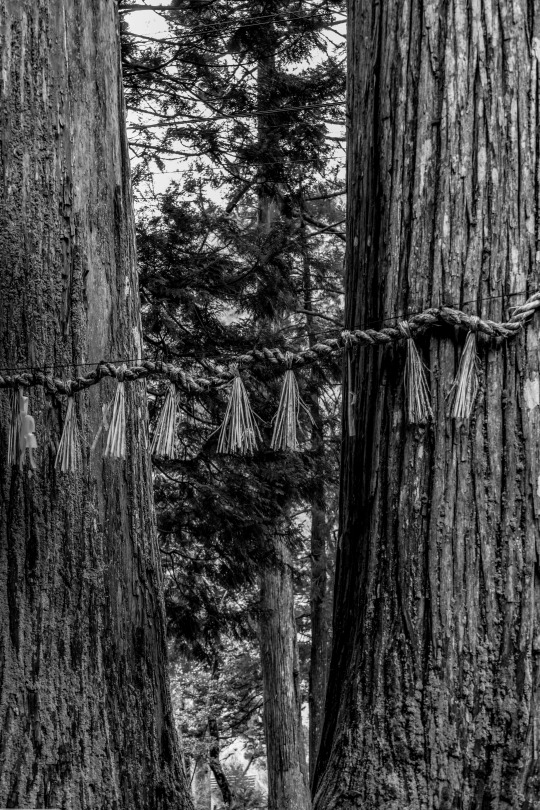

Jumy-M
Forest of Prayer / 祈りの森
369 notes
·
View notes
Text
Buddhist artists didn’t limit themselves to footprints — a number of symbols cropped up to represent the Buddha, many of them pretty creative.
In some cases, artists used the dharmachakra, or dharma wheel, itself. In addition to representing the cyclical nature of existence, the wheel was full of meaning. Its roundness represented the perfection and completeness of the Buddha’s teachings; its spokes stood for the important concepts of the religion (i.e., eight spokes for the eight noble truths), and its hub represented the key virtues of Buddhism. We often see worshippers adoring the wheel in lieu of the Buddha, as in this example from the second century BCE:
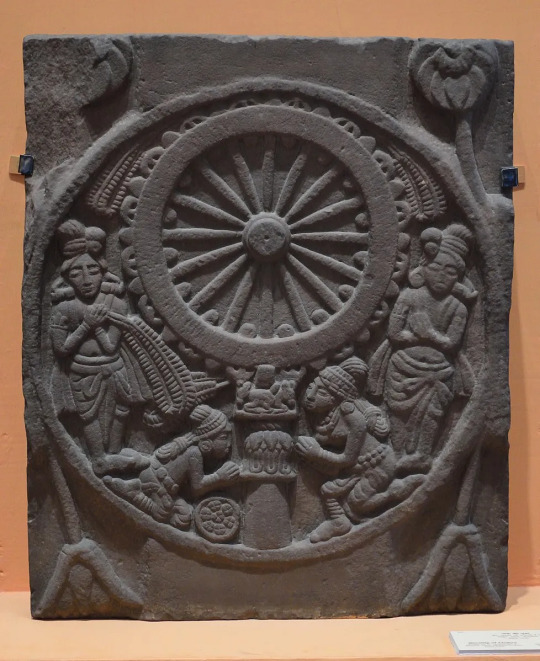
{Buy me a coffee} {WHF} {Medium} {Substack}
You can see more fascinating Buddhist art here:
123 notes
·
View notes
Photo
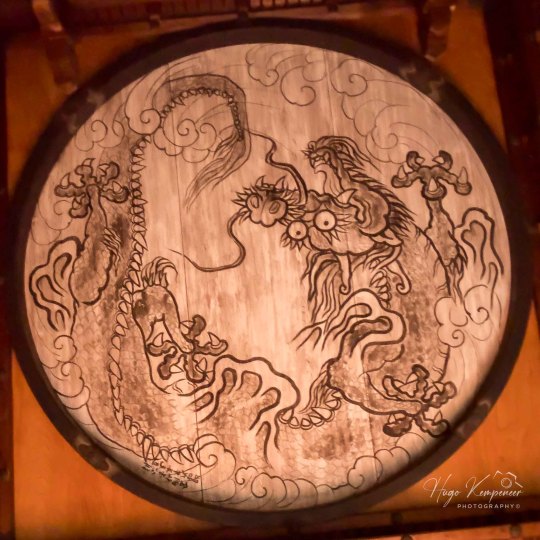
Hidden very quietly in the north of sacred Koya-san sits the Renge-ji Temple in Sakyo-ku, Kyoto.
Ishikawa Jozan designed this pond-style garden called “Chisen Kaiyushiki”.
#Buddhism#Chisen Kaiyushiki#Imaeda Chikayoshi#Ishikawa Jozan#Japan#Japanese garden#Koyo#Kyoto#Kōyō#Momijigari#Renge-ji#Renge-ji Temple#autumn#autumn photography#maple leaves#momiji#travel#trees#もみじ#紅葉#紅葉狩#蓮華寺
54 notes
·
View notes
Text
Comes to You
Have you ever noticed that the world comes to you? In fact, the entire universe comes to you! It all comes to you, and the question becomes: what is your answer?
"Comes to you" comes from all your sensory processes. You do not have to do anything. You don't have to lift a finger! It is a gift from the universe. The chemical-electrical signals of the universe enters inside of you. Then, what do you do with this gift?
You are in an enclosed bubble and the entire universe is outside. The universe enters inside your bubble, one input at a time. The amount the universe enters inside your bubble depends on your reaction. What do you do with all of this?
Your reaction is your answer. You push back. You take the very, small piece of the universe and you bounce it back to where it came from. A small piece of the universe stays with you and the rest bounces back. What stays with you, changes you.
The universe enters and the universe leaves. How much the universe leaves behind depends on you. That is how simple this is! This is what the universe left behind: The universe gave you life. Gave you consciousness. Gave you existence. And now, what do you do?
#consciousness#atheist#mind#meditation#buddha#atheism#buddhist#spiritual#hinduism#buddhism#gnosis#gnosticism#gnostic teachings#illusion#freedom of mind#fragments of my mind#imagination#tree of life#kabbalah#perception#mystic#mystical#mysticism#taoism#dao#daoist#desires#emotions#reality#existence
29 notes
·
View notes
Photo
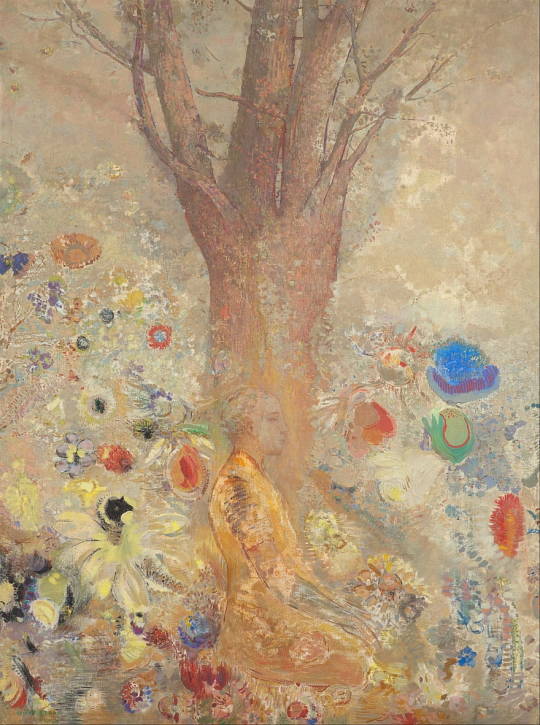
Der Buddha von Odilon Redon (1904, Gemälde)
#buddha#odilon redon#redon#odilon#gemälde#artwork#painting#art#kunst#kunstwerk#buddhism#flowers#warm colors#tree#spiritualgrowth#spirituality#spiritual
34 notes
·
View notes
Text
Maybe this is autism, maybe i’m just insecure, but i really dislike how I can’t feel ownership over my own face.
When I look in the mirror or photos I don’t innately feel that my face is my face, and I feel like that’s something other people feel without even a thought. I’m always thinking to myself, “This is you,” every time I look in the mirror. Now I don’t have to think about it that much because i’ve luckily Pavlov’ed myself over the years, but I still don’t feel that it’s my face. It’s like my face is on loan from its actual owner and, naturally, I want to give it back so I can have my own. I have this habit of examining old photos of my parents, searching for any trace of genetic likeness from me to them, trying to scientifically will my brain into understanding that this is, indeed, my face. I can understand science. Genetically, I look like a mix of my parents; that is me. I look at my brother and see shared likeness between us. His face is like my face, but I wonder if he owns his.
But I also don’t feel like my being has a face. It’s either just a reflection of my current peers or nothingness. I don’t like knowing that people see this face and associate it with me because it’s not me. It’s like a mask I can’t take off (haha, mask, masking, I see that). I feel most like myself when I dissolve the concept of having a body from me, like pretending i’m not stuck in this temporary meat suit. I feel most like me when I forget i have a body and lose myself in things, hobbies, activities, laughs, etc. I am a verb, not a noun. I am the seeing in the mirror, not the subject reflected back.
#Learning the Dharma and following Buddhism has helped the inner conflict i have about my temporary meatsuit#I’ve found a lot of comfort in knowing that in my next life i’ll get a new one that’ll look completely different#maybe it won’t even be a meat suit#but perhaps i’ll be a plant#i’d like to be a tree#it’s funny how i wanted to write this post all day not knowing that autism is trending on tumblr rn#i guess it was a good time to have these thoughts#autism#neurodivergent#thoreauing up
11 notes
·
View notes
Video
20230612 Gujo 12 by Bong Grit
Via Flickr:
苗代桜の直ぐ側にあったお地蔵様。お地蔵様なのにしめ縄に紙垂。 @Nawashiro sakura, Gero city, Gifu pref. (岐阜県下呂市 苗代桜)
#Jizo#Buddhism#Stone statue#Stone#Statue#Shimenawa#Shide#Nawashiro sakura#Sakura#Sakura tree#Cherry blossom#Tree#Trees#Forest#Mountain#Nature#Plant#Wasa area#Gero#Gifu#Japan#RICOH#RICOH GR3#flickr
23 notes
·
View notes
Text
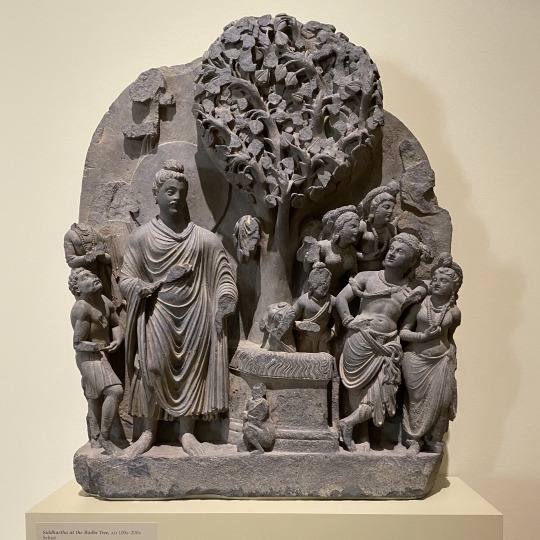
Siddhartha at the Bodhi Tree (AD 100s–200s) at the Cleveland Museum of Art
#mine#cma#cleveland museum of art#buddhism#bodhi tree#bodhisattva#gandhara#schist#stone carving#the buddha#siddhartha gautama
77 notes
·
View notes
Photo
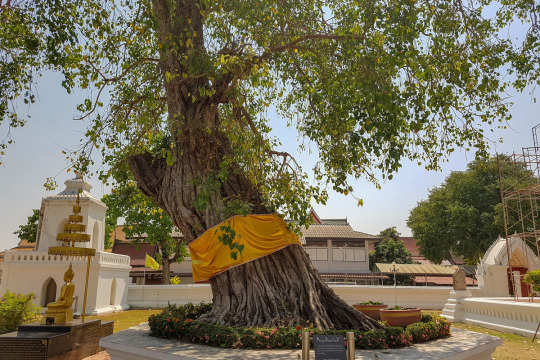
Boddhi tree (ficus religiosa) shrine, Thailand
206 notes
·
View notes
Photo

Legends and myths about trees
Trees in Buddhism (3)
Sal tree (Shorea robusta) – the Nirvana
In Buddhism, there is an important day called 'Sanbutsuki (3 anniversaries of the Buddha)', which commemorates three major milestones in the Buddha's life.
These are Buddhist rituals of the Nativity on 8 April, when Buddha was born, the Jodo-e (becoming a Buddha) on 8 December, when he attained enlightenment, and the Nirvana on 15 February, when he passed away.
The Buddha's death is believed to have occurred on 15 February of the lunisolar calendar in China and Japan, and in many places it is now held on 15 March.
According to Buddhist tradition, the Buddha was lying between a pair of sal trees when he died:
Then the Blessed One with a large community of monks went to the far shore of the Hiraññavati River and headed for Upavattana, the Mallans' sal-grove near Kusinara. On arrival, he said to Ananda (Ref1), the chosen disciple, "Ananda, please prepare a bed for me between the twin sal-trees, with its head to the north. I am tired, and will lie down. (DN16; Nirvana Sutra)"
When the Buddha died in Kusinara, there were 4 or 8 sal trees on the 4 corners of his bed. They were said to have bloomed at the same time, then quickly withered and turned white, just like a flock of cranes.
In Buddhism, the brief flowering of the sal tree is used as a symbol of impermanence and the rapid passing of glory. The sal tree is also said to have been the tree under which Kondana and Vessabhu, respectively the fifth and twenty fourth Buddhas preceding Gautama Buddha, attained enlightenment.
The sal tree (shorea robusta, sāla, shala, sakhua, or sarai), is a species of tree in the family Dipterocarpaceae. The tree is native to India, Bangladesh, Nepal, Tibet and across the Himalayan regions.
The sal tree is mythologically classified as a 'tree of life', symbolising resurrection, rebirth and rejuvenation, but in Buddhism it is one of the three most sacred trees, symbolising parinirvana, as the Buddha died under two sal trees in a row.
The three most sacred Buddhist trees are:
Ashoka tree: the tree where the Buddha was born (Ref).
Bodhi tree: the tree where the Buddha attained enlightenment
Sal tree: the tree where the Buddha died.
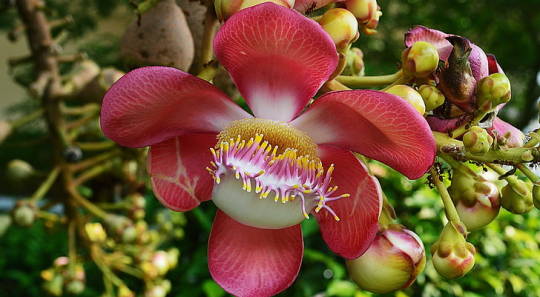
木にまつわる伝説・神話
仏教の樹木 (2)
沙羅双樹 (サラソウジュ) 〜涅槃会 (ねはんえ)
仏教には、ゴータマ・ブッダの生涯における3つの大きな節目を記念する「三仏忌 (さんぶつき)」という大切な日がある。
それが、ブッダが生まれた4月8日の降誕会 (こうたんえ)、悟りを開いた12月8日の成道会(じょうどうえ)、そして入滅した2月15日の「涅槃会(ねはんえ)」。
ブッダの入滅は中国や日本では旧暦2月15日とされ、現在は3月15日に行なわれているところが少なくない。
また、仏教の伝統によると、ブッダは入滅したとき、一対の沙羅双樹 (サラソウジュ) の間に横たわっていた。
その後、大勢の僧侶たちの中から選ばれたアーナンダ(参照1)はヒラニャーヴァティ川の向こう岸に行き、クシナラ近くのマッラ族の沙羅樹の林、ウパヴァッタナへ向かった。到着すると、ブッダはアーナンダに言った。「アーナンダ、2対の沙羅双樹 (サラソウジュ) の間に、頭を北に向けた寝床を用意してください。私は疲れているので、横になります。(DN16; 大般涅槃経)」
ブッダがクシナガラで死去したとき、臥床の四辺に4双8本の沙羅双樹 (サラソウジュ)があった。時じくの花を咲かせ、たちまちに枯れ、白色に変じ、さながら鶴の群れのごとくであったという。
仏教では、沙羅双樹 (サラソウジュ)の木の短い花は、無常と栄光の急速な通過の象徴として使用されることもある。また、沙羅双樹 (サラソウジュ) は、ゴータマ・ブッダに先立つ5番目の仏陀であるコーナニャーと24番目の仏陀であるヴェッサブーが悟りを開いた木であると言われている。
沙羅双樹 (サラソウジュ)はフタバガキ科の樹木の一種で、インド、バングラデシュ、ネパール、チベット、ヒマラヤ地方に自生している。
沙羅双樹 (サラソウジュ)は神話学的には復活・再生・若返りの象徴である「生命の木」に分類されるが、仏教では二本並んだ沙羅の木の下で釈尊が入滅したことから般涅槃の象徴とされ、仏教三大聖樹のひとつである:
無憂樹: 釈迦が生まれた所にあった樹木(参照)
印度菩提樹:釈迦が悟りを開いた所にあった樹木
娑羅双樹:釈迦が亡くなった所にあった樹木
#trees#tree legend#tree myth#trees in buddhism#sal tree#buddha#nirvana#ananda#buddhist rituals#philosophy#nature#art#sacred trees
167 notes
·
View notes
Text
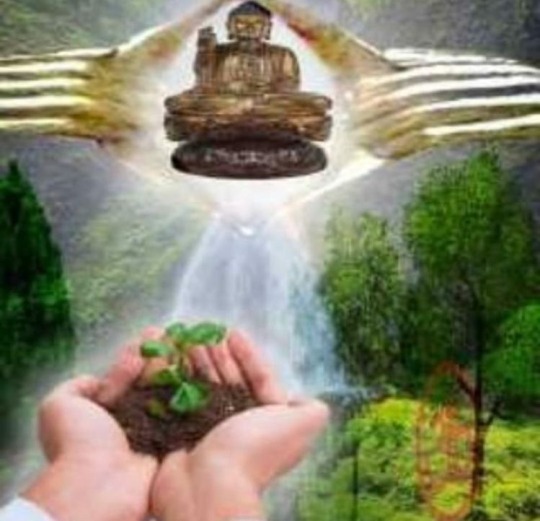
#spiritual#spirituality#buddha#buddhism#consciousmind#consciousawakening#conscious awareness#tree of life#spiritualawareness#spiritualpath#vibrationalfrequency
29 notes
·
View notes
Photo
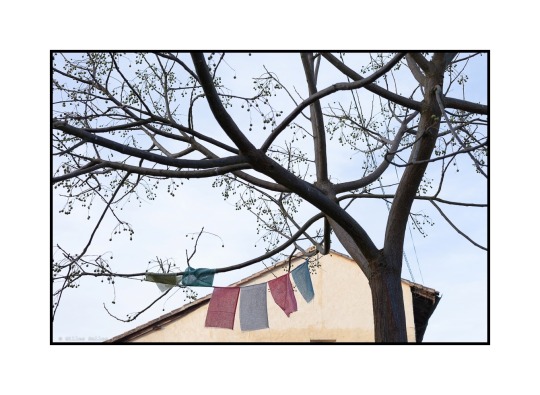
Peace tree
© Gilles Salles
#tree#flag#prayer flags#prayer for peace#buddhism#peace tree#photographers on tumblr#streetphotography#original photography blog
93 notes
·
View notes
Text
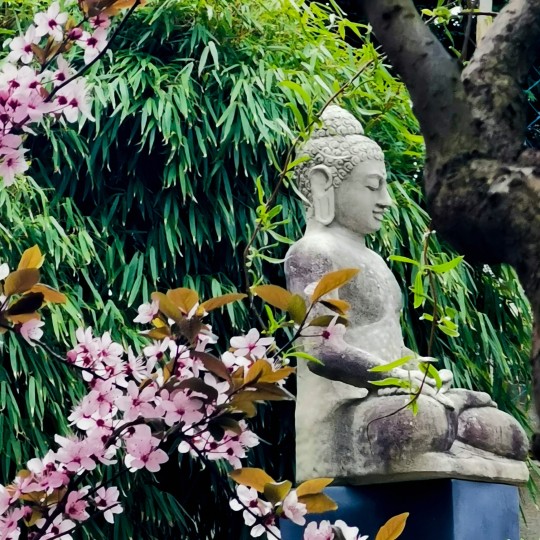
by Robin M Koppensteiner
growingrobin.com
#buddah#buddhist#buddhism#sakura#cherry blossum tree#cherry blossoms#spirituality#meditation#nature#philosophy#spring#beauty#peace#peaceofmind#mindfulness#awareness#consciousness#meditating#meditative
23 notes
·
View notes
Photo
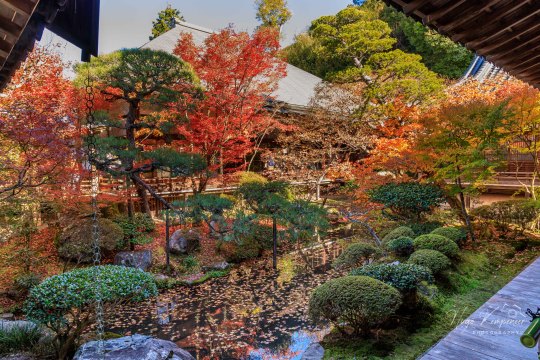
Autumn Scenery (2023) at Eikan-dō in Kyoto City, Japan.
#Buddhism#Eikan-dō#Eikan-dō Zenrin-ji#Japan#Koyo#Kyoto#Kōyō#Landscape#autumn#autumn photography#maple leaves#matsuri#momiji#travel#trees#もみじ#永観堂禅林寺#紅葉
55 notes
·
View notes
Photo
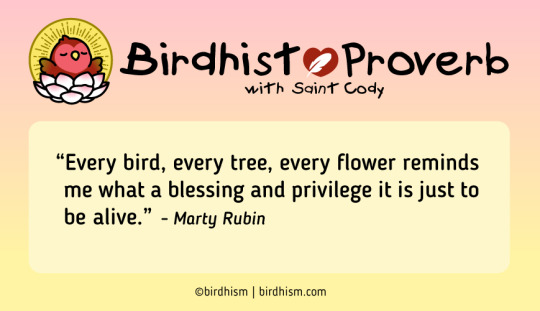
If you're stressed, take a walk outside, watch the birdy dramas in the trees. This past spring, I saw a wild mama mird feeding her goofy-looking little babies and it was the cutest thing - made me so happy. I highly recommend going outside and going full hippy.
#mood#depression#birds#birblr#animals#pets#nature#inspiration#positive#motivation#flowers#trees#buddhism
41 notes
·
View notes
